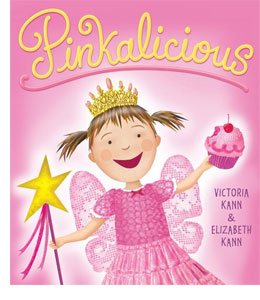Title: Charlotte's Web
Author: E.B. White
Publisher: HarperCollins
Date: 1952
Number of pages: 192 pages
Reading level: Ages 9-12
Genre: Childrens Fantasy
Summary: Fern Arable has always been an animal lover. However, she had never saved a pig from an untimely injustice until the day she learned that her father planned on shooting a runt, just because he had been too small. Begging her father for a chance to save the little oinker, Fern wins the battle, and is given the opportunity to raise the wriggling piglet as her own. Promptly named Wilbur, Fern falls in love with her new charge, and can't get him off her mind, even while at school. But as he grows bigger and bigger each day, things begin to change. Soon, Mr. Arable refuses to allow Wilbur to sleep in the house, then her father reprimands her for taking Wilbur for walks in her doll carriage. Soon, Fern is forced to sell little Wilbur to her Uncle Homer, where Wilbur is quickly swept away, and forced to live. Fern doesn't mind the arrangement as long as she can still see her beloved friend. But when she learns that Uncle Homer plans to fatten the little piggy up and then kill him, she's devastated. As is Wilbur. Confiding in the other farm animals, Wilbur begs everyone for their help in saving his life. Sadly, none of the animals seem to know what to do to keep Wilbur from meeting his fate. No one, that is, except for an intelligent spider known as Charlotte.
Charlotte lives right above Wilbur in his tiny alcove, where she spends her days and nights weaving beautiful webs. When she decides to help Wilbur by spelling words and phrases such as "Some Pig" and "Terrific" in her webs, the county becomes interested in visiting this amazing pig, leaving Uncle Homer in awe, and giving him the chance to spare little Wilbur's life. Thanks to Charlotte's efforts, and with the assistance of the gluttonous rat Templeton, Wilbur not only lives, but goes to the county fair with Charlotte and wins a prize. Having reached the end of her natural lifespan, Charlotte dies at the fair. Wilbur repays Charlotte by bringing home with him the sac of eggs she had laid at the fair before dying. When Charlotte's eggs hatch at Zuckerman's farm, most of them leave to make their own lives elsewhere, except for three: Joy, Aranea, and Nellie, who remain there as friends to Wilbur; but none of them can replace Charlotte in Wilbur's life on the farm.
My reaction: A wonderful introduction to friendship, family, and loyalty. The concept of death is brilliantly presented without pulling any punches. Charming, with a brittle edge, and a touch of whimsy! I have loved this book since I was about 6 years old, and my teacher read it to my 1st grade class.
Potential problems: Some children in rural communities may find that injustice in killing the pig to be confusing. In fact, many farming communities do not share this boko in public school's as it makes the children who live on farms, feel uncomfortable.
My recommendation: I would reccommend this book to everyone.This is a wonderful book for young children, growing up, because it teaches them about their own self-worth in a busy world. It also teaches us about the value of lives, how short they can be, and how much we can make of them. Charlotte saves Wilbur by spinning words in her webs, using her short life to benefit his life and the lives of others. I give this book 5 stars and definately will read it to my children one day.






